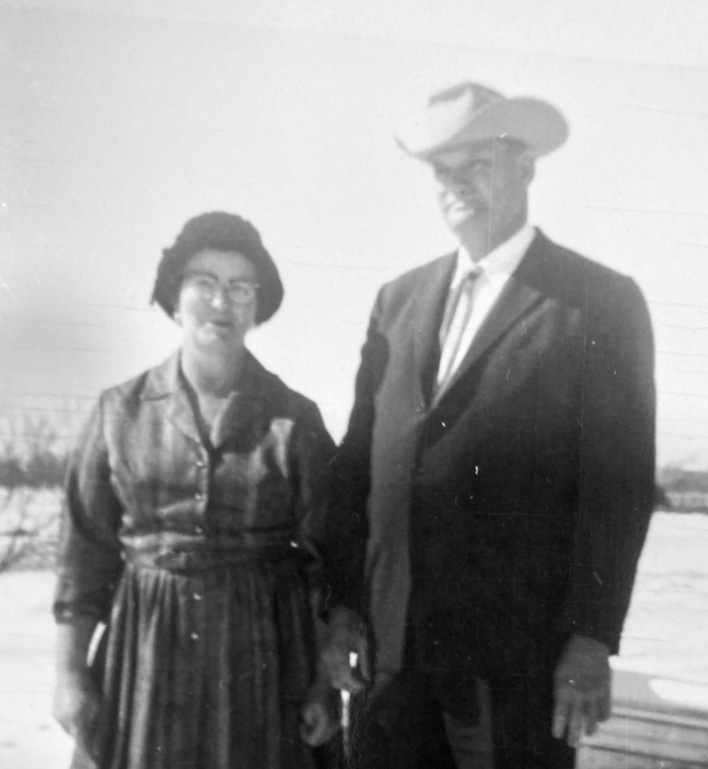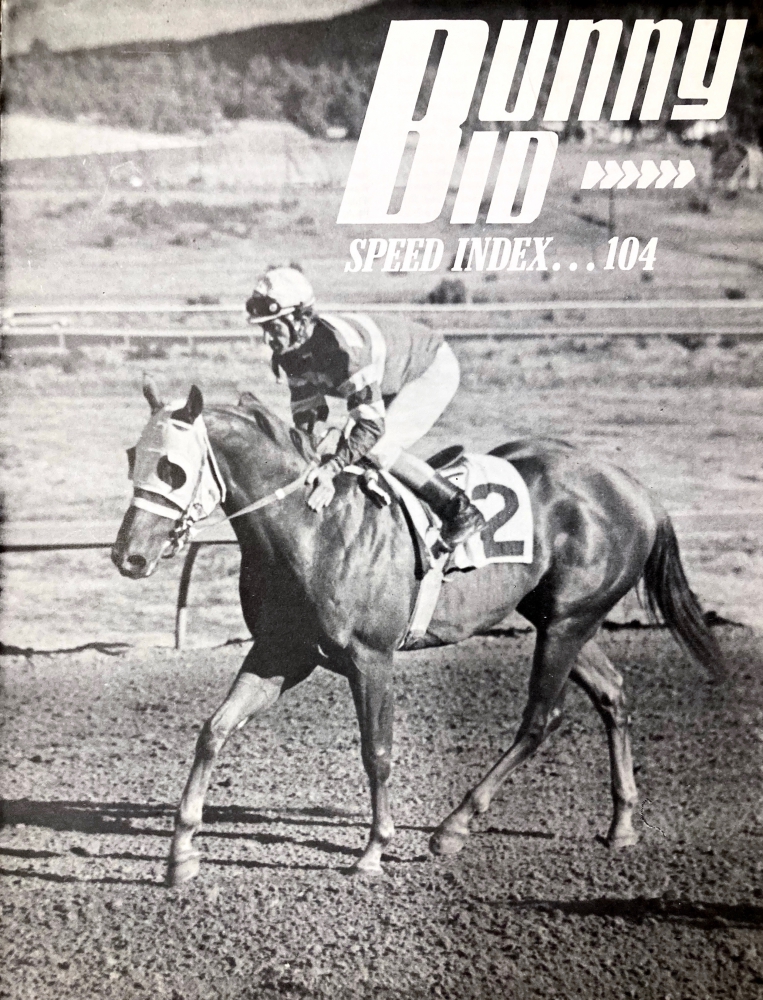
Blogs
Charley Kester’s Horses
Tuesday, January 31, 2023 by Phyllis Kester
 Charles Marvin Kester Jr. was a tall, larger-than-life Texas rancher raising cattle and row crops. This man-of-few words lived his life a few miles south of the Red River near Odell, a small town in west Texas. Whenever he stood in your doorway in his Stetson hat, Levis, and cowboy boots, he filled the space. Little light could squeeze around him. He gave the impression, “Don’t mess with this Texan.”
Charles Marvin Kester Jr. was a tall, larger-than-life Texas rancher raising cattle and row crops. This man-of-few words lived his life a few miles south of the Red River near Odell, a small town in west Texas. Whenever he stood in your doorway in his Stetson hat, Levis, and cowboy boots, he filled the space. Little light could squeeze around him. He gave the impression, “Don’t mess with this Texan.”
Shortly after Monty and I married, I discovered how strong Charley was physically. He took the family to eat at a Friday Fish Fry in a small west Texas town. Monty’s brother, still in high school, wanted to see if now he was stronger than his older brother. He kept prodding Monty to see which one of them could score highest on a machine in the corner of the restaurant. You had to squeeze something that would test your grip strength. A semicircle dial showed the power of your grip by how far the needle rotated on the scale. If you had a super-strong handgrip, it spun the pointer across the entire semicircle and rang a bell. The two muscular brothers kept trying to ring the bell, but neither succeeded. Meanwhile, Charley paid for the meal and sauntered over by the boys.
“Let me show you what a man can do,” he said as he casually reached over and grabbed the grip. With a quick flip of his wrist, the bell rang. Turning on his heels, Stetson firmly planted on his head, he strolled out to his vehicle as the rest of us stood in stunned silence.
Charley had a special love for horses. During the early years of his marriage (the 1930s), he had to limit himself to teaching his horse, Ole Denver, all sorts of tricks. Denver could bow to people after performing some of his tricks—like untying a handkerchief tied around his leg, stealing something out of Charley’s back pocket, or nudging Charley along with his head against his back when Charley acted like he was drunk and couldn’t walk on his own.
In the 1940s, when Charley could afford more time and energy on his horse hobby, various ranchers periodically got together to race their horses and bet on them. His young son, Monty, got shanghaied into being the jockey for Charley’s racehorse. However, the “horse bug” never bit Monty, like it did his brother. As Monty became too big to be a jockey for his dad, he moved on to other things like football, basketball, and track.
Later Charley and his wife, Ida, began going to Quarter Horse Races and the All American Futurity at Ruidoso Downs in the scenic Sacramento Mountains of southern New Mexico. He and five Texas friends decided to buy themselves an outstanding racehorse. They researched bloodlines and put their collective heads together regarding what they had learned about horses. At one of the Ruidoso auctions, they bought the quarter horse, Bunny Bid.
They chose a Quarter horse that is bred for its fast burst of speed straight out of the gate on a short track, instead of a Thoroughbred that starts slowly but can win longer races since they don’t slow over time.
The American Quarter horse is a specific breed of horse that is perhaps best known for its speed over short distances. Initially they raced a quarter of a mile or less—hence the name. This breed is originally American and began in Virginia shortly after Jamestown was established in 1607. Its characteristics include limited white markings on the face and below the knees, heavy muscling in its short, stocky build, and a mellow personality. This breed has also been found to make an excellent working horse on cattle ranches. It is a superior show horse in rodeo events, such as barrel racing, where its exceptional agility and bouts of speed enable excellent performances.
After their quarter horse purchase, Charley and his friends armed themselves with a horse trainer and lots of dreams. They began their exciting journey of training a world-class racing quarter horse named Bunny Bid. In an April 15, 1972 issue of The Quarter Racing Record magazine, it stated Bunny Bid was the 1971 Champion Racing Stallion and 1971 Champion Three-Year-Old Colt. He was the first Quarter Horse to earn over $100,000 in two consecutive seasons with a record of 23-lifetime starts (16 wins, six seconds, and one fifth—which included three track records). It further stated in 1972, Bunny Bid had a stud fee of $1,000.
began their exciting journey of training a world-class racing quarter horse named Bunny Bid. In an April 15, 1972 issue of The Quarter Racing Record magazine, it stated Bunny Bid was the 1971 Champion Racing Stallion and 1971 Champion Three-Year-Old Colt. He was the first Quarter Horse to earn over $100,000 in two consecutive seasons with a record of 23-lifetime starts (16 wins, six seconds, and one fifth—which included three track records). It further stated in 1972, Bunny Bid had a stud fee of $1,000.
Although Charley’s love of horses served him well with Bunny Bid, I think the best horse story about him is another one. It goes back to Ole Denver, the horse he taught so many tricks. Those two were best buddies. One day back in the 1930s, Charley rode Ole Denver to the store in Odell. Yes, Charley may have had a vehicle, but what respectable Texas rancher drives when he has a horse? He tied Ole Denver to the hitching post and went into the store. Since this was before telephones and before many cars had made their way to west Texas, it meant many things had to be done in person since you couldn’t call on the phone. Charley finished his business in town and returned to where his horse had been tied. But Ole Denver got tired of waiting out in that hot west Texas sun and simply untied himself and returned home—leaving Charley to walk that hot, dusty road back home.
I still chuckle every time I think of this story, probably because it reminds me that my actions and decisions really can have unexpected consequences at a later date.
Previous Posts
Singing
Phyllis Smith Kester
6/3/2025
Dreaming
Phyllis Smith Kester
5/21/2025
Tornado Alley
Phyllis Smith Kester
5/5/2025
Geodes--Part 2
Phyllis Smith Kester
4/23/2025
1940s in Oklahoma
Phyllis Smith Kester
4/8/2025
Buel Overcomes Adversity
Phyllis Smith Kester
3/24/2025
Buel Smith & Pitchers
Phyllis Smith Kester
3/11/2025
Remembering Grandpa Smith
Phyllis Smith Kester
2/26/2025
Meeting Corrie ten Boon
Phyllis Smith Kester
2/10/2025
Walking the Plank
Phyllis Smith Kester
1/28/2025
Train Ride in a Flood
Phyllis Smith Kester
1/13/2025
Saltillo Surprises
Phyllis Smith Kester
1/1/2025
Connecting Two Pictures
Phyllis Smith Kester
12/18/2024
Kintsugi Brokenness & Beauty
Phyllis Smith Kester
12/3/2024
Capillary Action
Phyllis Smith Kester
11/20/2024
A Forge and Anvil
Phyllis Smith Kester
11/5/2024
Tree Analogy #5-Bloom
Phyllis Smith Kester
10/24/2024
Tree Analogy #4: Brokenness
Phyllis Smith Kester
10/9/2024
Israel and Golan Heights
Phyllis Smith Kester
9/25/2024
Tree Analogy #3: Bent Tree
Phyllis Smith Kester
9/11/2024
Lesson From NASA
Phyllis Smith Kester
8/27/2024
Storm Warning
Phyllis Smith Kester
8/14/2024
Tree Analogy #2: Hanging Sod
Phyllis Smith Kester
7/31/2024
Tree Analogy #1: Angel Oak
Phyllis Smith Kester
7/17/2024
The Warning Shot
Phyllis Smith Kester
7/2/2024
Trip's Delayed Surprise
Phyllis Smith Kester
6/18/2024
Antelope Slot Canyon
Phyllis Smith Kester
6/4/2024
The Pioneer Woman
Phyllis Smith Kester
5/21/2024
What is a Woman, a Wife, or a Mother?
Phyllis Smith Kester
5/8/2024
Two Analogies
Phyllis Smith Kester
4/24/2024
Solar Eclipse Analogy
Phyllis Smith Kester
4/10/2024
EASTER
Phyllis Kester
3/26/2024
The Resurrection Plant
Phyllis Smith Kester
3/12/2024
Busted on Pikes Peak
Phyllis Smith Kester
2/27/2024
What is Love?
Phyllis Smith Kester
2/13/2024
Looking, But Not Seeing
Phyllis Kester
1/30/2024
Remembering Christmas 2023
Phyllis Kester
1/16/2024
The Potter
Phyllis Kester
1/2/2024
The Tree Ornament
Phyllis Kester
12/19/2023
Cockapoo Kristy
Phyllis Kester
12/6/2023
Surprises & Obsessions
Phyllis Kester
11/21/2023
Breaking Thru
Phyllis Kester
11/7/2023
Eagles
Phyllis Kester
10/24/2023
Facing Fear
Phyllis Kester
10/10/2023
The Bug-Eyed Monster
Phyllis Kester
9/25/2023
The Flash Flood
Phyllis Kester
9/12/2023
David's Library Book
Phyllis Kester
8/29/2023
Object Lesson: The Leaky Bucket
Phyllis Kester
8/16/2023
Turpentine Creek
Phyllis Kester
8/1/2023
The Surprise
Phyllis Kester
7/17/2023
Small Pleasures
Phyllis Kester
7/4/2023
Are Fathers Important?
Phyllis Kester
6/20/2023
Fathers and Father's Day
Phyllis Smith Kester
6/6/2023
Legacies of my mother, Hallie Hays Smith
Phyllis Smith Kester
5/23/2023
Hallie's Handkerchief Holder
Phyllis Kester
5/9/2023
A Voice from the Past
Phyllis Kester
4/25/2023
Object Lesson: The Crystal Paperweight
Phyllis Kester
4/11/2023
Grandma’s Quilting Bee
Phyllis Kester
3/28/2023
Actions have Consequences
Phyllis Kester
3/14/2023
Hungry Baby
Phyllis Kester
2/28/2023
Married to a Texan
Phyllis Kester
2/14/2023
Charley Kester’s Horses
Phyllis Kester
1/31/2023
Persistence In The Dirt
Phyllis Kester
1/17/2023
Object Lesson: Mushrooms in Our Life
Phyllis Kester
1/3/2023
Trip with Unexpected Twists
Phyllis Kester
12/20/2022
Grandma’s Important Legacy
Phyllis Kester
12/6/2022

